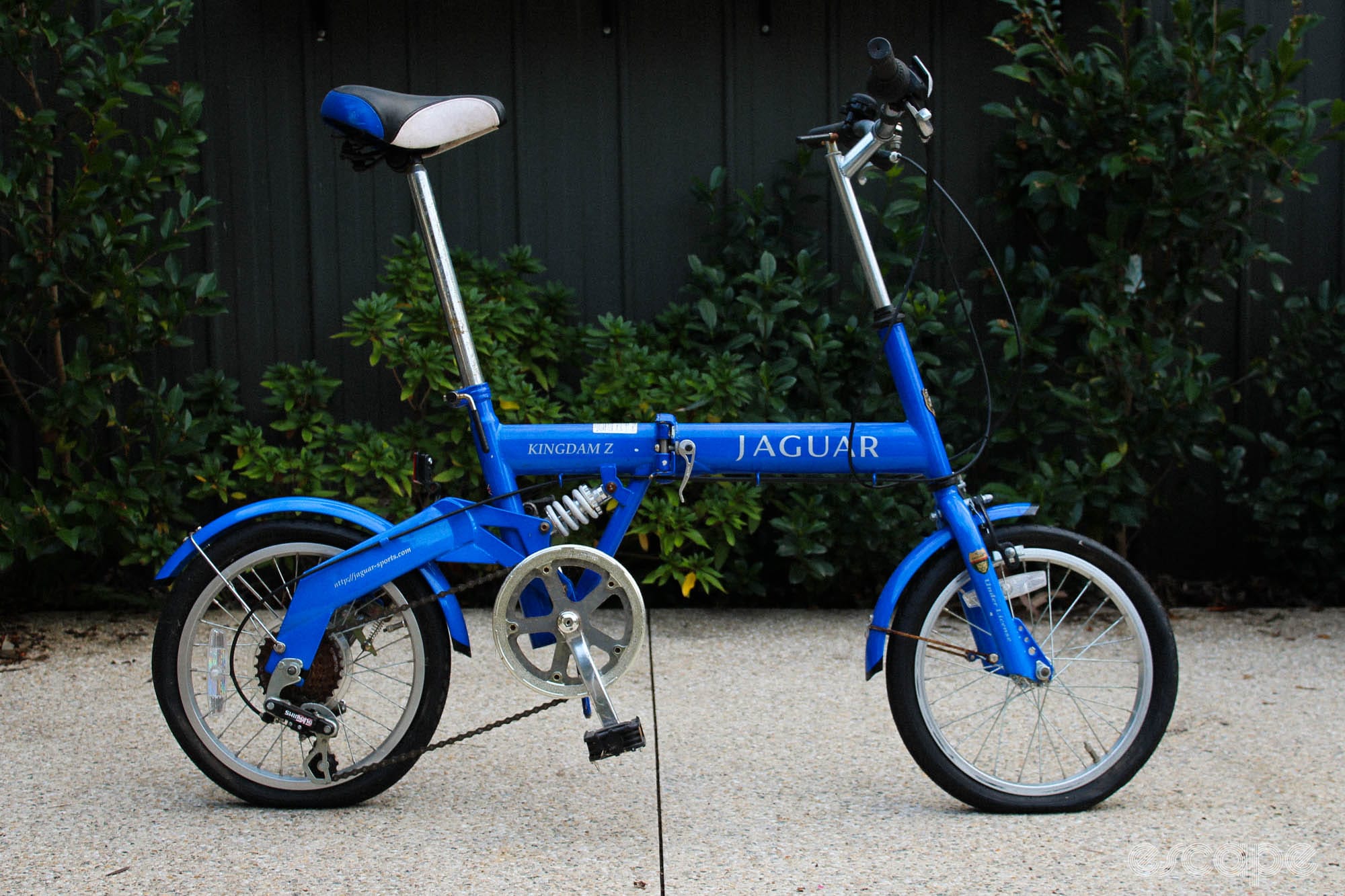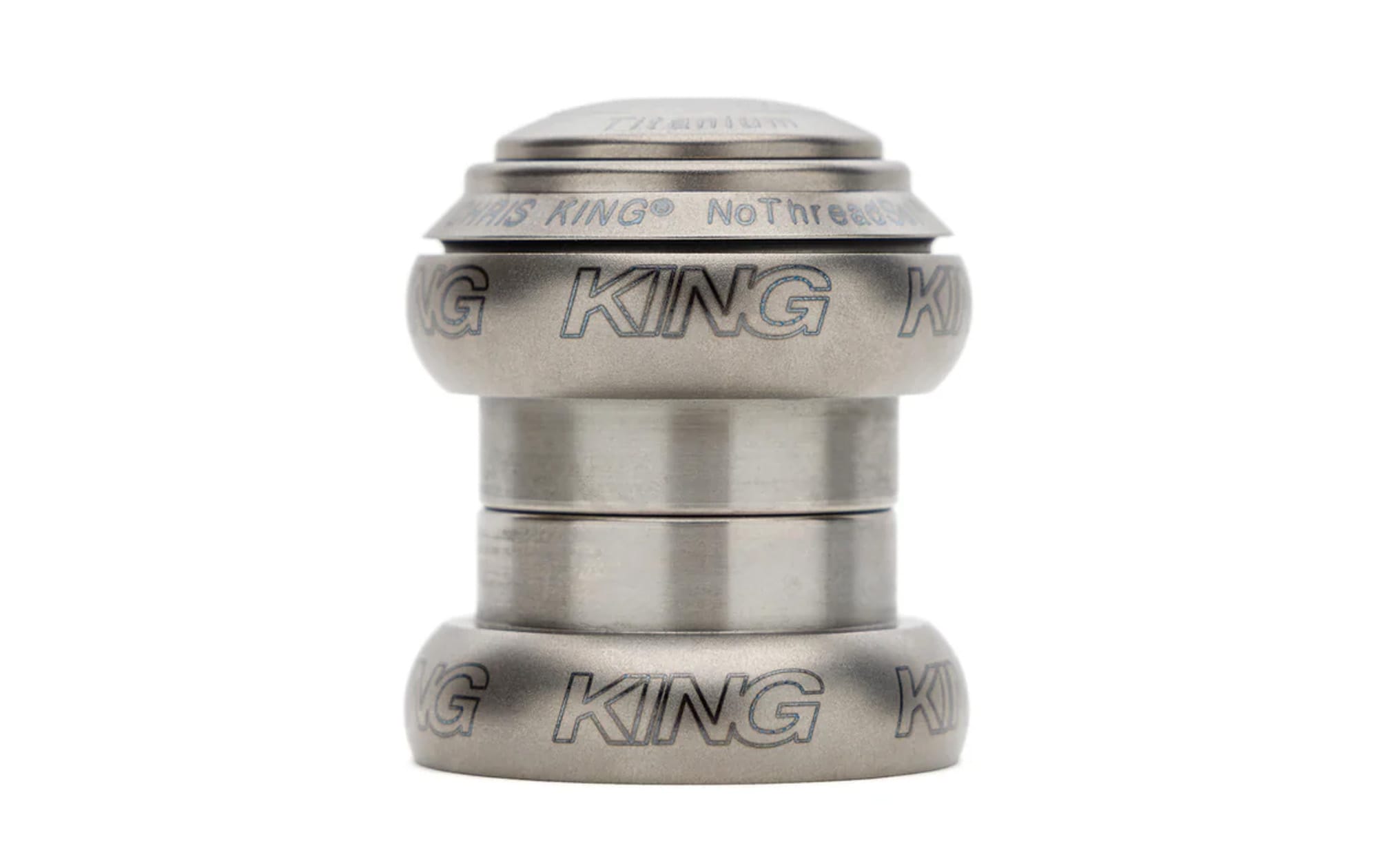The 2024 Climate Action Pulse Check, a survey conducted by the non-profit Shift Cycling Culture, has provided a view of the cycling industry’s efforts to address climate change, and found a notable disconnect between the optimism of industry professionals and the skepticism of consumers.
According to the inaugural survey, which tracks both industry actions and consumer sentiment on sustainability, 80% of industry representatives reported that their companies are taking a strategic approach to climate action. However, the study concluded that perspectives on the sustainability performance within companies vary, with staff members often more optimistic than top management. A similar gap in optimism was seen between the industry and consumers; overall, 60% of industry professionals expressed optimism about their company’s sustainability efforts, compared to only 24% of consumers sharing that sentiment.
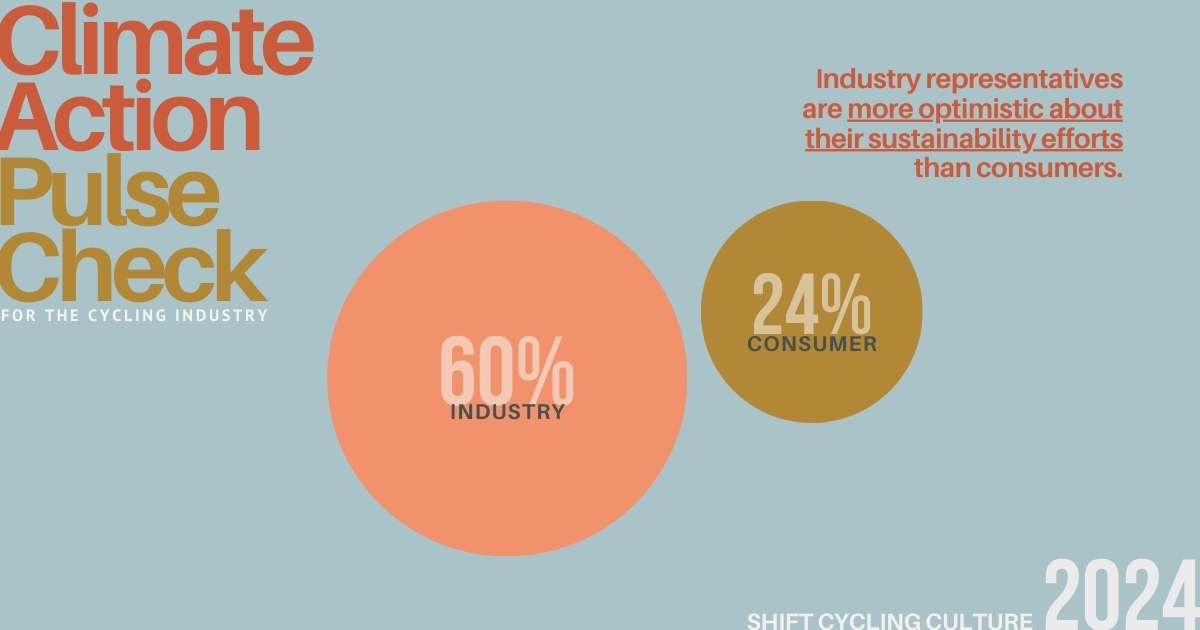
“We found this gap in optimism, because we asked not only the industry participants but also the cycling consumers: 'How do you feel about the sustainability efforts of the cycling industry?' And it was quite interesting that people working in the industry are much more optimistic compared to the cycling consumer,” Sandra Brandt, the executive director of Shift Cycling Culture said.
“60% of the responding companies replied that they feel either very positive or positive about the efforts but with the cycling consumers, it was only 24%. So, there's quite a gap there. And of course, we try to find reasons to explain this gap. The difference in this optimism could be simply because people working in the industry have a clear view of what's happening within the industry, whereas consumers aren’t necessarily aware of the brands’ efforts since not many companies are communicating about what they're doing.”
This might also indicate a discrepancy in what the brands offer and consumers want. A clear majority, 77%, of cycling consumer respondents said they have switched brands due to sustainability concerns, and the majority wanted less new things and longer lifespans.
“The top two responses were product longevity and durability, but also repairability and compatibility. It was interesting that we saw that for the cyclists it’s often not about the latest innovation and having the latest, greatest, newest out there – but most important to them is actually wanting to ride their beloved bike and use their favorite gear as long as possible. And I'm sure that many agree that the cycling industry has still a long way to go when it comes to repairability. But also backward compatibility, and this definitely helps to explain the gap as well,” Brandt explained.
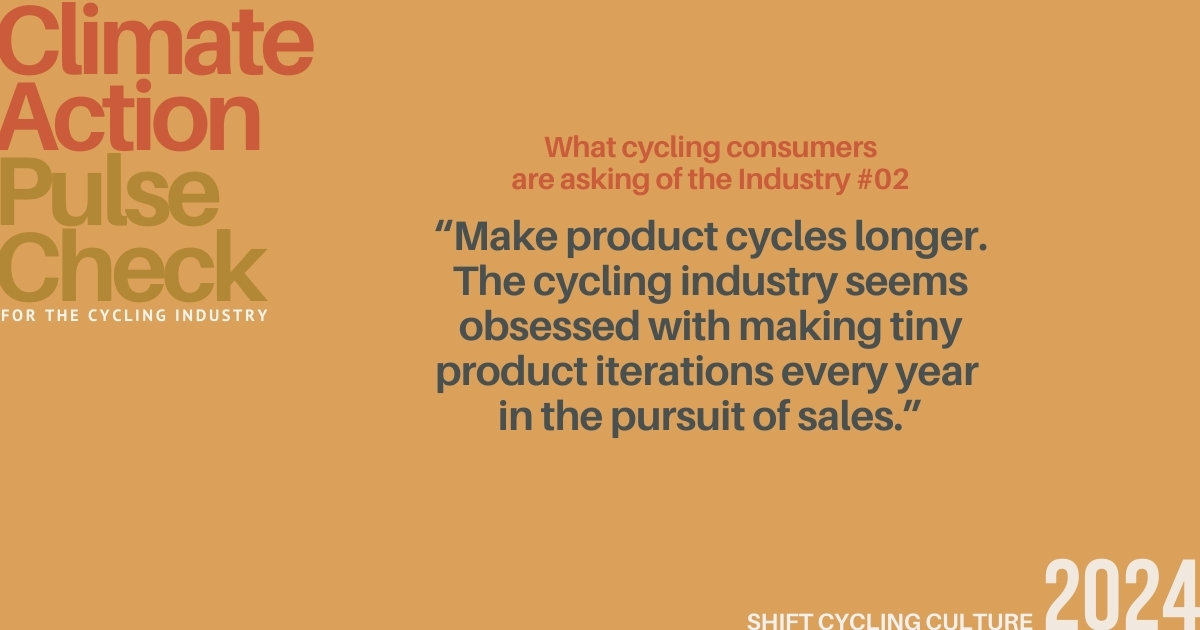
Supply chains and collaboration are key
One of the report’s central findings was that supply chain engagement and industry collaboration are critical to scaling climate action. 79% of respondents said their companies are actively addressing indirect emissions from their supply chains.
“We know that the biggest impact of companies in the cycling industry come from their supply chain – from the way we make our products. That's why it is actually no surprise that companies say the biggest lever for us to pull is to work with our suppliers to change the way those products are being made. In the end we want them not only to contact their suppliers and to ask them ‘can you share with us your emission data’ – but for us it’s also really about working in collaborating with their suppliers to get them on board and to collaboratively find out how can we have a positive impact and how can we do things in a different way?” Brant said.
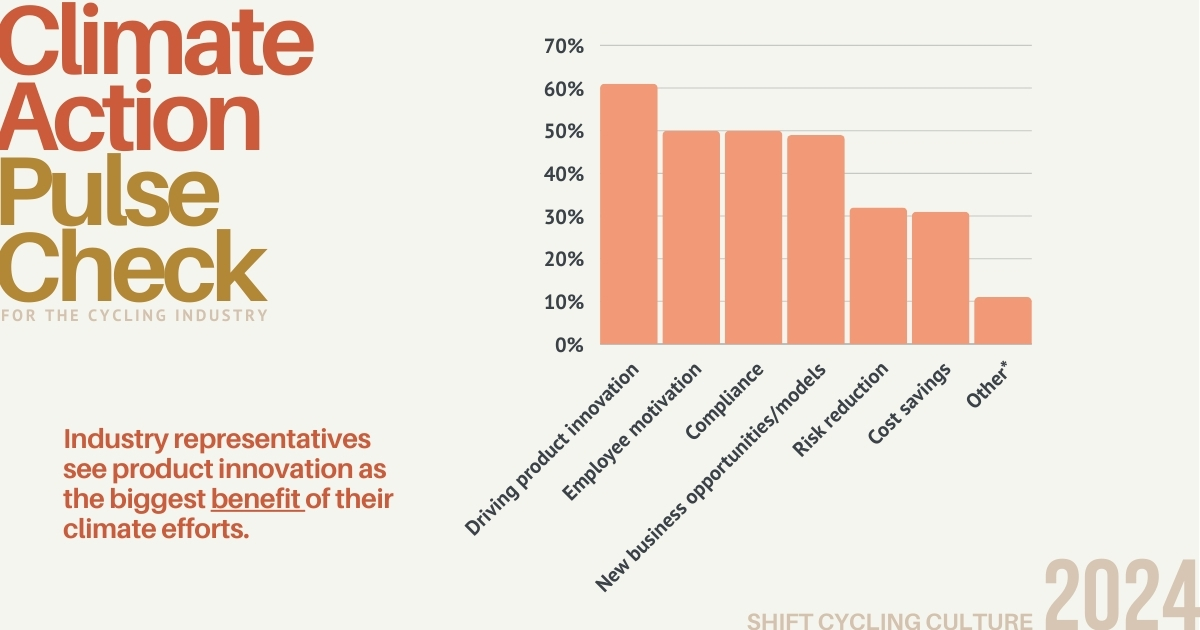
Collaboration within the industry is growing, with 61 percent of companies participating in joint initiatives, such as co-developing a Climate Action Training program for suppliers in Asia and exploring the use of recycled materials in manufacturing. Brandt highlighted the training program, which launches later this month, as an example of the industry's efforts to foster cooperation:
“We're quite excited about this project because the collaboration within the cycling industry is still relatively new compared to other industries. We hope also with this project we can showcase how companies can come together and also with that, then basically create a blueprint for more collaboration to come.”
Opportunity for an annual check-in on progress
Despite the gap between industry and consumer perceptions, 87 percent of the industry respondents said they had seen tangible benefits from their climate efforts, including product innovation, legal compliance, and increased employee motivation.
Looking ahead, Shift Cycling Culture plans to make the Climate Action Pulse Check an annual survey, tracking progress across the industry. “This will become our yearly barometer of the industry’s climate efforts,” Brandt said. “It’s not just a report, but part of a broader toolbox we offer to help organisations take meaningful action. It is also a chance for us to identify inspiring case studies that will feed into the roadmap, basically helping us to bring it to life and motivate others to take action. So it's also connected to all the other resources that we offer. But it's definitely also going to be our annual check in to be able to communicate on the progress that the industry is taking and also to give the cycling consumers the voice – it has been quite important to involve them.”
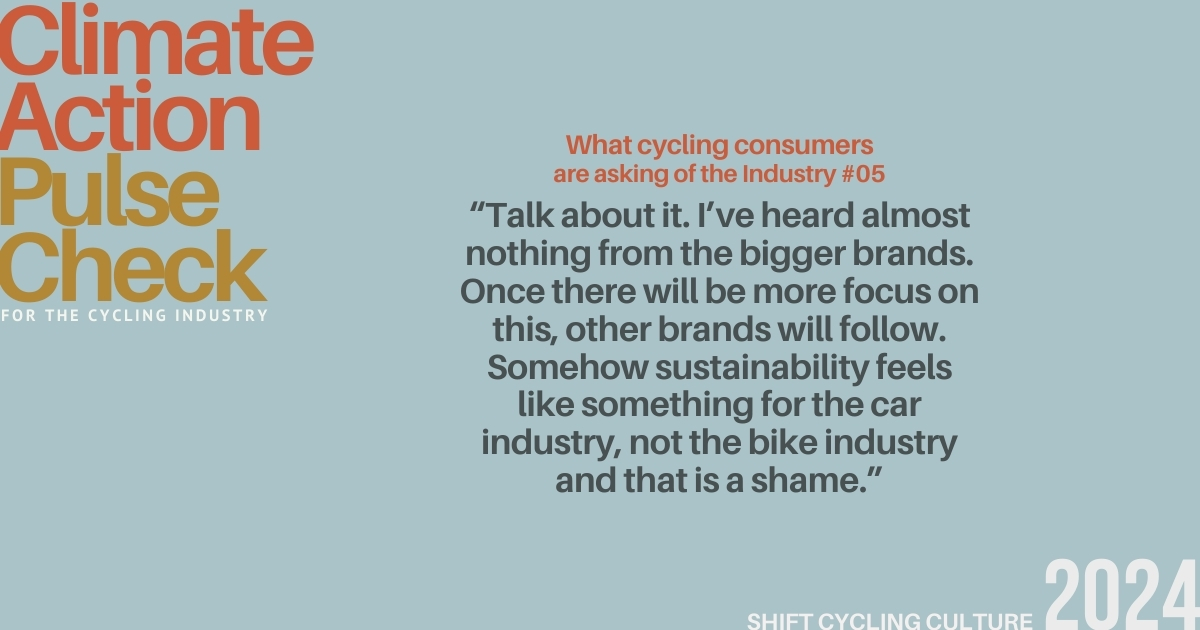
The inaugural Climate Action Pulse Check drew responses from 84 industry professionals across 16 countries and 240 cycling consumers from 19 countries, collected between June 3 and July 7, 2024. It follows Shift Cycling Culture’s 2021 Climate Commitment, which saw more than 80 companies pledge to reduce their climate impacts in line with the Paris Agreement, and the 2023 Climate Action Roadmap, a self-assessment tool designed to help organisations turn their climate ambitions into actions.
Did we do a good job with this story?


